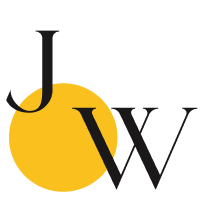
Female Hormones 101
Your period is your 5th vital sign, and can give us an indication of our overall health. Understanding and being in tune with your cycle can tell you so much about your physical health, therefore it is important for each woman to get to know their own unique cycle to know not only what is normal for her, but also to understand how to utilise their cycle to optimise their vitality and wellbeing.
Before we dive into the phases of the menstrual cycle, it is important to understand a few key hormones that are at play during this time.
Oestrogen
Oestrogen is produced primarily by the ovaries, however it is also produced by other tissues such as the placenta and fat cells, and smaller amounts are produced by the adrenal glands.
Oestrogen is responsible for the development of female secondary sex characteristics such as breast development and distribution of body fat, and plays a vital role in regulating the menstrual cycle and supporting growth and maturation of ovarian follicles. Oestrogen also helps to maintain a healthy vaginal and uterine lining, and plays a key role in maintaining bone density and supportive cardiovascular health.
When oestrogen is in balance, it:
- Supports the menstrual cycle & ovulation
- Thickens the uterine lining to prepare for pregnancy
- Supports healthy breast tissue
- Keeps the skin clear and plump
- Supports heart health, bone health and mood
When oestrogen is in excess, we can experience:
- Heavy, painful periods
- PMS and PMDD
- Fibroids, ovarian cysts, endometriosis and adenomyosis
- Painful, tender and fibrocystic breasts
- Fluid retention
When oestrogen is low, we can see:
- Light periods
- Irregular or missing periods
- Vaginal dryness
- Dry skin
- Hot flushes
- Mood changes
- Bone loss
Progesterone
Progesterone is produced by the corpus luteum within the ovaries, and levels reach their peak mid-way through the luteal phase of the menstrual cycle. Progesterone supports pregnancy by preparing the uterine lining for implantation of a fertilised egg, and helps to maintain pregnancy by preventing contractions of the uterine muscles. Progesterone works in conjunction with oestrogen to regulate the menstrual cycle.
When progesterone is in balance:
- A sign of healthy ovulation and fertility
- Regular menstrual cycles
- Calms the nervous system
- Supports cardiovascular health
When progesterone is imbalanced:
- Irregular or long cycles
- Missing periods
- Heavy, painful periods
- Anxiety
- PMS
Follicle Stimulating Hormone (FSH)
FSH is produced and released by the pituitary gland, located at the base of the brain. It is responsible for stimulating the growth and development of ovarian follicles in the ovaries, which have the potential to release an egg during ovulation. FSH plays an important role in the control and regulation of the menstrual cycle, and levels are typically at their highest right before ovulation.
Luteinising Hormone (LH)
Much like FSH, LH is also produced and released by the pituitary gland. LH levels surge midway through the menstrual cycle, triggering ovulation and the release of an egg from the ovary. During the luteal phase, LH assists in the formation and maintenance of the corpus luteum, which produces progesterone
The Menstrual Cycle
An average cycle lasts about 28 days, although this can vary from person to person. We count day 1 of your bleed as day one of your cycle. The cycle is a series of hormonal changes that occur to prepare the body for the possibility of pregnancy.
Understanding your unique menstrual cycle empowers you to better care for your body and overall wellbeing. It also allows you to anticipate changes, track patterns and make informed decisions about your health, contraception and reproductive goals.
There are 4 distinct phases of the menstrual cycle, which can be likened to the seasons. These different phases encompass different physical fluctuations, therefore it can be useful to be mindful of which phase you are in and employ various diet and lifestyle changes to best support your body through that phase.
It is important to mention that each woman’s cycle length will vary, with a normal cycle falling anywhere between 21 and 35 days in length, that is from day 1 of your period to day 1 of the following period. Although the model we will discuss is based on a 28 day cycle, the 4 phases still apply to cycles that differ in length, the timing and duration of each phase may just be different. To determine what phase you are in, it is useful to get to know the symptoms of each phase, or begin to track your cycle.
Menstruation – Day 1- 5 – Winter
The first day of your bleed signifies the start of your cycle, and the beginning of the menstruation phase. During this time our hormones oestrogen and progesterone drop in order to allow the endometrium to shed and pass through the vagina, resulting in a bleed.
We want to focus on slowing down and turning inward during this phase, giving your body the slowness and rest it is craving. This is a time for reflection and rest – the more you rest, restore and nourish during this phase the more energy you will have for the rest of your cycle. It is an idea to allow yourself to spend time around the home, and where possible limit your work load and social engagements.
In terms of exercise, enjoy moving your body gently through exercise such as walking, stretching, yoga and Pilates.
Nourishing your body through food is also important during this phase. Focus on easily prepared, easily digested warming, nourishing foods such as soups and broths and ensure you include highly nutritious foods, rich in protein, iron and B vitamins. For those women with heavy periods, iron deficiency may be an issue so focusing on iron rich foods to replenish iron lost through menstruation is important – foods such as red meat, organic liver and plant rich sources of iron such as black beans, cooked lentils, cooked spinach, dried apricots and spirulina.
Incorporating Omega 3 rich foods (such as oily fish, nuts & seeds, avocado and extra virgin olive oil) can be beneficial as they are anti-inflammatory. Magnesium rich foods (such as avocado, dark leafy greens, nuts & seeds, cacao) also help to support hormone production, and magnesium can assist with reducing muscle cramps and spasms.
Follicular Phase – Day 6 – 14 – Spring
The follicular phase is a time of increased energy, motivation and socialisation as oestrogen and testosterone levels are on the rise. During this phase, follicles in the ovaries are beginning to mature. As we get closer to ovulation, there is one dominant follicle developing that releases an egg at ovulation, influenced by our follicular stimulating hormone (FSH) and oestrogen.
This phase is a good time to explore new things, plan, brainstorm and problem solve! The follicular phase is the time to include more high intensity exercise to harness this increased energy.
In terms of food, lightly cooked, steamed or sautéed meals are ideal for this time. Aim to include lean protein such as fish, plenty of whole grains, sprouted beans and seeds, and nutrient-dense, energy sustaining grains such as quinoa and buckwheat.
Ovulation – Day 14 – 21 – Summer
After the follicular phase we have ovulation, which is the prime time for fertility therefore if you are trying to conceive or prevent pregnancy, understanding your ovulation window is key. Ovulation is the most important part of the menstrual cycle, whether you are trying to conceive or not. Ovulation is how you make hormones, it determines whether you will have a period and is how you conceive.
Ovulation is the time when we tend to feel more confident as it is the time where we are the most fertile, and our oestrogen and testosterone are at their peak. This makes the ovulation phase a great time to communicate, socialise, schedule meetings and take advantage of this confidence.
Make the most of the increased energy during this phase by incorporating HIIT, running or other cardio based exercise.
To support the body through ovulation, lightly cooked, steamed or sautéed food is best, ensuring you include plenty of fibre (such as raw vegetables) and focus on fresh, vibrant plant foods. Opting for a wide intake of brightly coloured vegetables will provide the body with antioxidants to support ovulation.
Luteal Phase – Day 21 – 28 – Autumn
During the luteal phase, oestrogen, progesterone and testosterone reach their peak concentrations before falling to their lowest levels right before menstruation begins. Oestrogen thickens the endometrial lining and progesterone keeps the uterine lining in place in anticipation of a fertilised egg. If an egg is fertilised and implants in the endometrium, this is the start of pregnancy. If the egg is not fertilised, progesterone drops away and triggers the endometrial lining to fall away again, which is the start of our next period.
Energy is naturally lower during this phase as hormone levels start to drop, therefore the luteal phase is a time for nesting, turning inward and winding down. If ovulation occurs, progesterone is produced, which stimulates relaxing neurotransmitters and promotes a calmer state. Exercise during this time should be light and slow, such as walking or yoga.
Appetite is increased during this phase, so focusing on nutrient dense whole foods is important. Complex carbohydrates (oats, quinoa, farro), healthy fats and cruciferous vegetables are important during this phase. Foods rich in B vitamins (think whole grains, bananas, beans, meat, poultry, eggs and legumes) help to keep sugar cravings at bay, and leafy green vegetables help to reduce any fluid retention occurring during this phase, as well as assisting the liver in excreting excess oestrogen, which reduces symptoms of PMS.
Author
Alice Flannery
Naturopath BHSc.
Alice is a degree qualified naturopath with a focus on women’s hormone health throughout the lifespan.
Learn more about Alice here
Book in with Alice here





